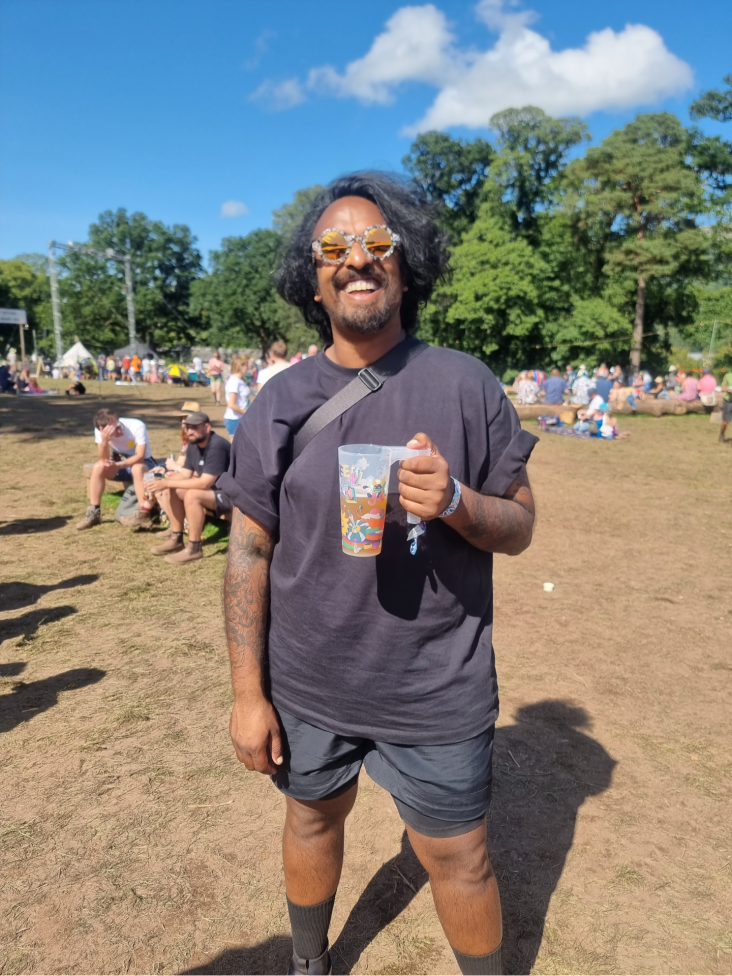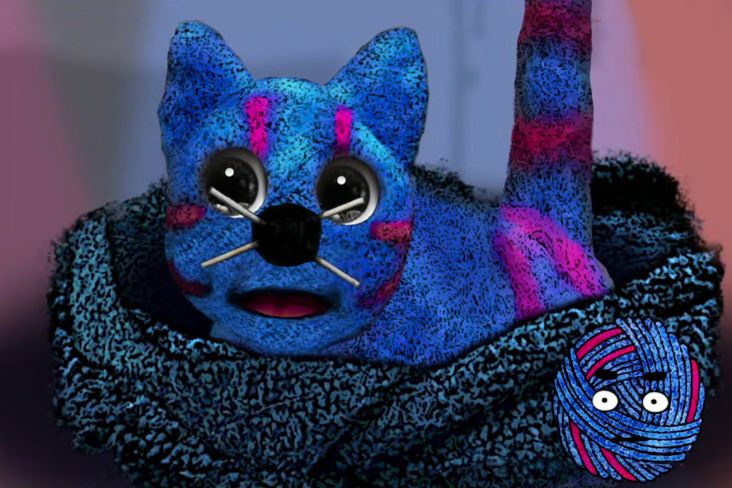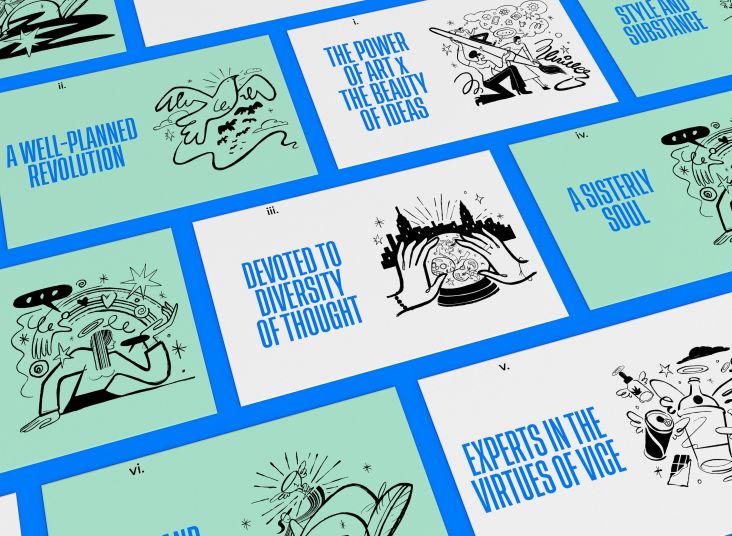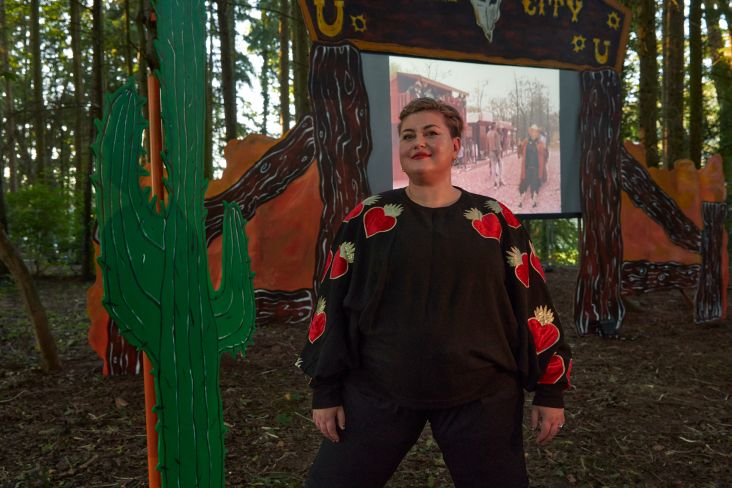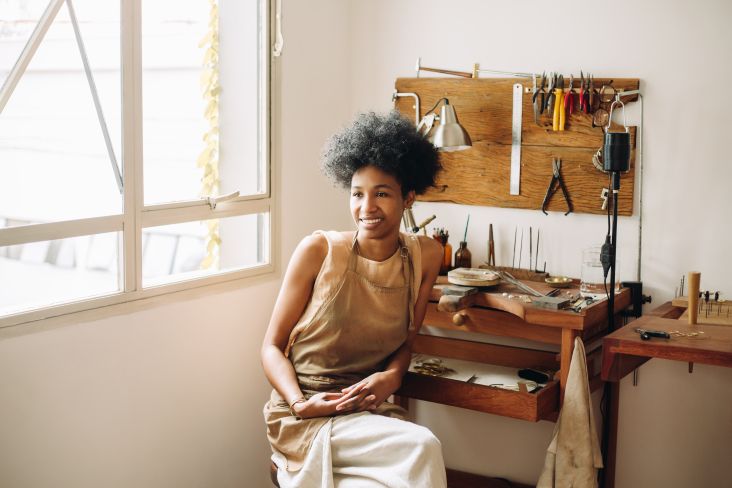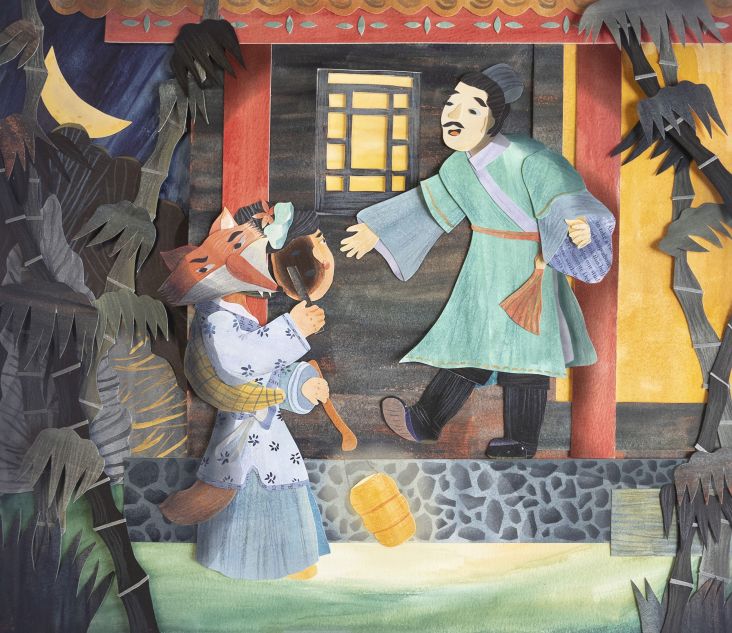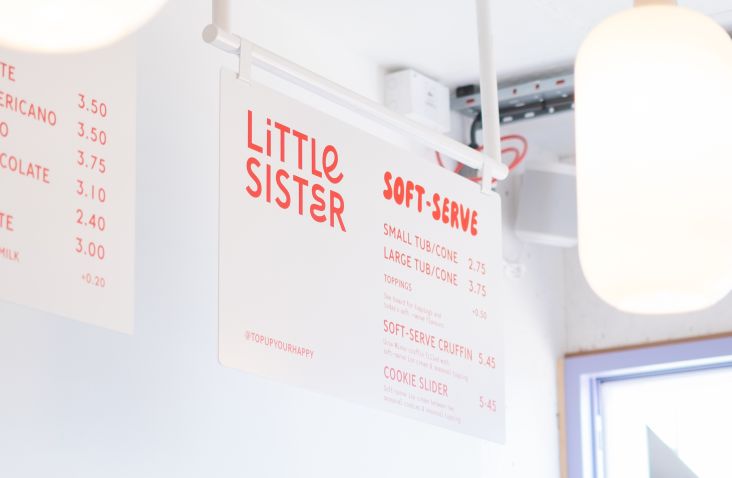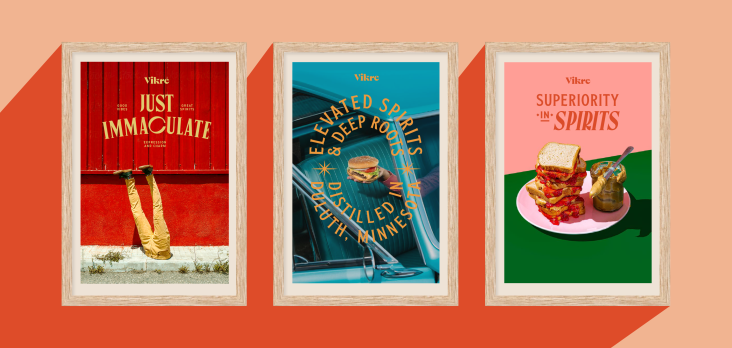Sam Tozer on bringing Sam Fender's songs to visual life at Reading Festival
The head of Vision Factory reveals how he helped make Sam Fender's Reading set the stuff of legend.

© Luke Dyson
Your favourite band is playing at a major festival. Yay! But you're on the fence about getting a ticket. Why? Well, you've been to massive gigs where you were stuck at the back, and there was zero atmosphere. You squinted at the tiny stick figures on stage in the distance, trying to feel something, but overall, it turned out to be a pretty crummy night.
I've had that exact experience many times. (No names mentioned, of course). But I've also experienced the exact opposite. With bands like The Offspring and Foo Fighters, it didn't matter how far back I was; somehow, they made me feel like I was right on stage with them.
So what makes the difference?
It has a lot to do with charisma. A healthy dose of crowd participation is useful, too. But overall, there must be a genuine passion for delivering an incredible show.
To achieve the latter, it helps to have a great visual production team. One who'll deliver you an epic spectacle that will wow the whole audience… right to the back of the field, arena or stadium.
The wow factor
Creative studio Vision Factory delivered just that for Sam Fender's recent headline show at Reading Festival. And that's not hyperbole: I literally mouthed 'wow!' a number of times, as did others around me in the crowd.
Harnessing shape-shifting lights, bespoke video backgrounds and animations, live footage, kinetic typography, fire, smoke, fireworks, confetti and more, this majestic spectacle took the audience on a journey of highs and lows that mirrored the 29-year-old's earthy and emotional rock songs.
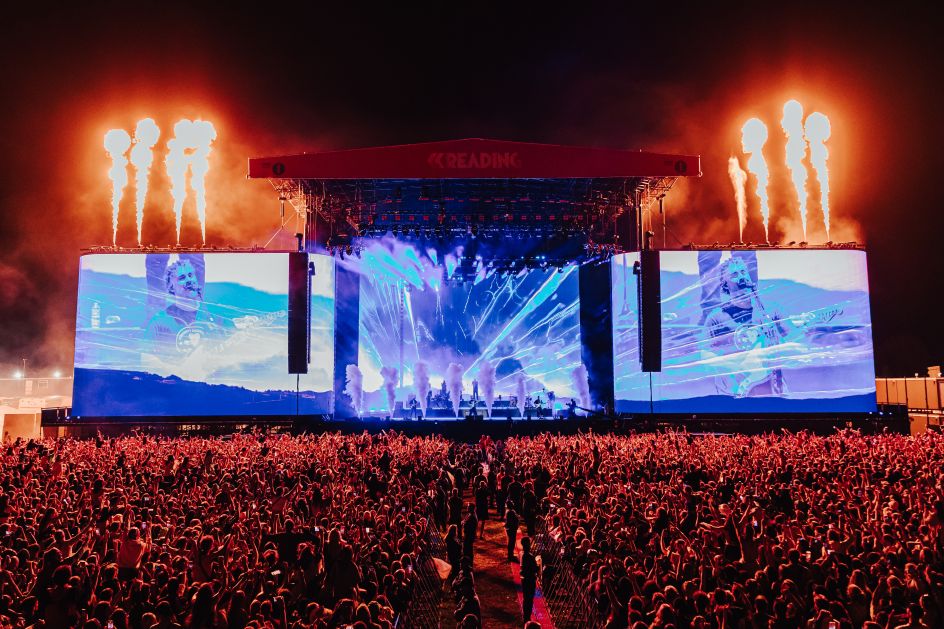
© Luke Dyson
You can get some idea of what that looked like from the images and this video via the BBC. But really, to fully appreciate these operatic visuals, you'd have had to seen them at their full, enormous scale. In other words, you had to be there. And that's kind of the point.
How they made it
The whole process of conception, designing and physically creating a show like this typically takes around six to nine months, explains Sam Tozer, creative director and stage designer for Sam Fender.
Like other kinds of design, he explains, it's very much a collaborative process. "The amount of involvement varies from client to client," says Sam, who's also delivered shows for Little Mix, Yungblud, Annie Marie and Skepta.
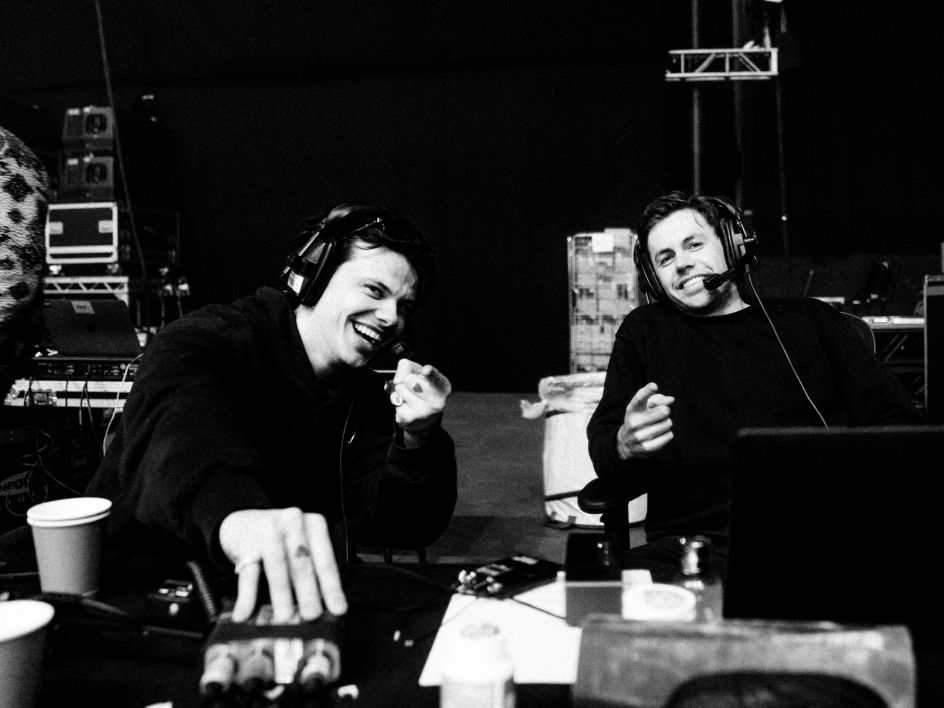
Sam Tozer with Yungblud. © Tom Pallant
"Some artists give us total creative freedom to interpret their work, whereas others come to us with a full directional idea of what they want. That's especially so with some of the new artists who've made their way up through social media."
As for Sam Fender, with whom he's worked since 2020, the aim is "to create a visual stimulus on stage that matches Sam's music while making sure it's fun because, at the end of the day, people are coming to enjoy themselves."
Sounds straightforward, but there's a fundamental contradiction here that needs to be overcome. As he points out: "The lyrics are very dark and very personal to Sam, but the tones of the music are quite upbeat. So it's about trying to find that balance in the visuals."
Another balancing act he had to strike was evoking the music and lyrics without overpowering them; it's the star people have come to see, after all. "So overall, it's a very thin tightrope that we have to walk."
It starts with the songs
His process begins by listening to the singer's lyrics and thinking about what message they were trying to convey. "And then it's about trying to establish a general 'shape' on stage," he adds. "In the show, I went for something very asymmetrical, quite heavy and metallic."
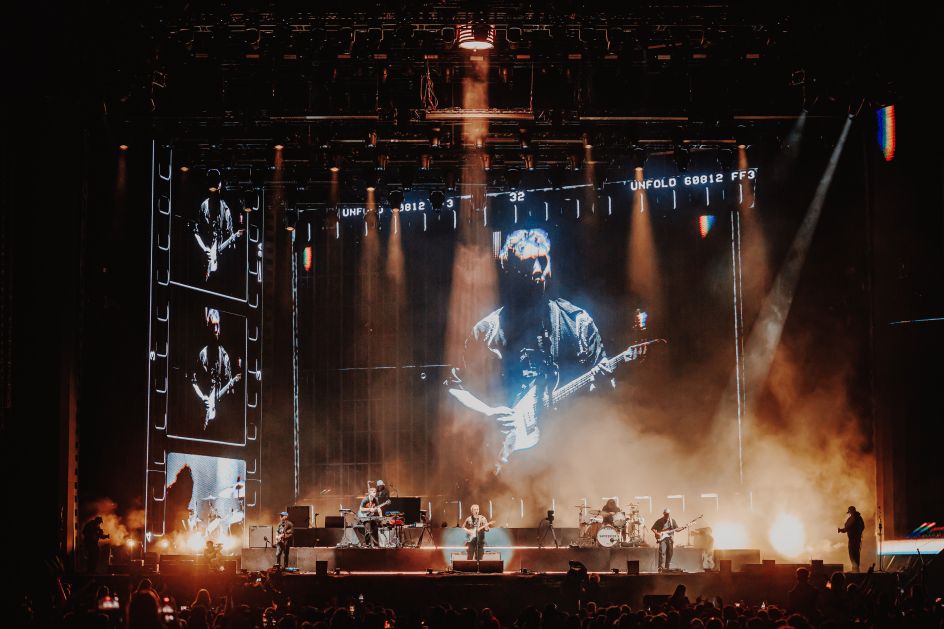
© Luke Dyson
He also worked with Flora Harvey, a set designer who works predominantly on large-scale musical events, to incorporate graphical elements connected to the singer's hometown of North Shields in Tyne & Wear.
Most eye-catchingly, the designs used clever theatrical techniques to create shapes with both light- and heavy-looking materials.
This gave the overall look a sense of depth and dynamism that you rarely get to see on large-scale stages.
Staying nimble
In general, a visual production should take the audience on a journey over the course of a performance, but in this case, that couldn't be planned too precisely, he explains.
"We don't really know what Sam's going to play until half an hour before the performance," he reveals. "So it's more about individual songs having their own visual reference key."
That said, he's worked with the singer long enough now to understand the general shape of a show. "It starts with relatively slow numbers, the ones that have a real story to them," he explains.

© Luke Dyson

© Luke Dyson
"Then, in the middle of the show, there's a real moment of craziness where he plays these big heavy rock numbers. Finally, at the end come the songs that everyone knows and can sing along to, when all the fireworks go off."
Planning ahead
As you'd expect, a lot of planning and collaboration goes into making sure all these visual elements work together perfectly on the night.
For the Reading show, Vision Factory took the sets and designs from the previous Sam Fender show – which took place in front of 100,000 people at St James' Park stadium in Newcastle – and drafted architectural drawings to adapt them to the new stage.
To create the video content, they passed their mood boards to an external content creation team, Unlimited Dream Company. This studio specialises in cinematic storytelling for live events and has also worked for the likes of Loyle Carner and Alicia Keys.
Lighting, meanwhile, was helmed by the lighting director Luke Avery, who's also worked with the likes of Wolf Alice and Michael Kiwanuka. Sophisticated use of automation allowed for the creation of new positions for lighting on stage, which subtly but effectively complemented the evolution of the music from beginning to end.

© Luke Dyson
To avoid problems on the night, the team created a practice stage, where session musicians ran through a version of the show and tested everything out. This process helped them avoid everything from lights distracting the performers to pyrotechnics putting them in danger.
On the night in question, Sam Fender introduced his backing band to the crowd in a typically modest style. "It might be my name on the ticket," he smiled, "but I'm just the c*** at the front: I'd be nothing without these guys."
The same might be said of Sam Tozer and his partners. These unsung heroes of visual production beaver away, quietly and efficiently, all year round. As a result, festival crowds don't go home downhearted and disappointed but with a song in their heart and memories for life.

















